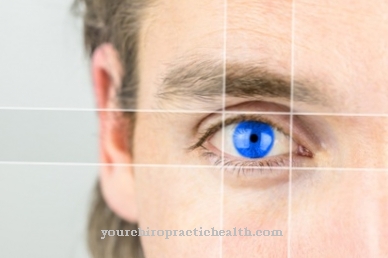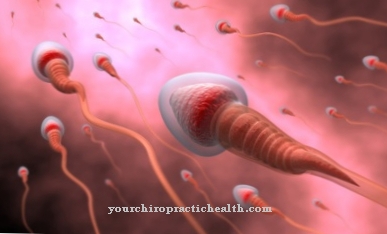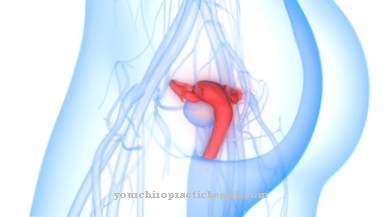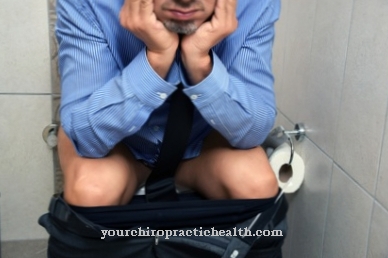Primitive reflexes are automatically running, physiological movement reactions of an infant, which are fully developed at the time of birth and last until the first year of life. From a developmental point of view, they are of great importance for the child's survival. The absence or persistence of individual reflexes is considered pathological and usually has negative effects on the child's development.
What is a primitive reflex?

The primitive reflexes are also known as early childhood or neonatal reflexes. They describe a reproducible reaction pattern of the infant to external stimuli. A distinction is made between food intake reflexes and holding, position and movement reflexes. The course of the reactions is only minimally variable and cannot be arbitrarily influenced by the infant.
The primitive reflexes are physiological in the first weeks of life and recede as brain development progresses within the first year of life.
Each individual reflex is assigned to a specific area of the central nervous system and is transmitted via the diencephalon. With the progressive development and myelination of the nerve pathways of higher brain centers, these primitive reactions are suppressed. The prerequisite for this is the ability of the infant to move freely and to gain control over its own body through initially random motor processes.
Function & task
From an evolutionary perspective, early childhood reflexes play an important role in a child's survival. Today they have largely lost their vital functions due to the protected environment in which babies spend their first year of life, but they are still an integral part of pediatric preventive examinations.
Various tests can be used to draw conclusions about the physiological development, among other things. Missing or asymmetric reflexes and their persistence beyond a certain period of time indicate neurological disorders.
The food intake reflexes consist of the search reflex, the sucking reflex and the swallowing reflex. Through them, the infant actively turns to the mother's breast, opens its mouth and begins to suckle. Up to the third or fourth month of life, the child's food intake functions exclusively by reflex.
The holding, posture and movement reflexes are also present for the most part from birth. The Galant reflex is triggered by stroking along the spine and causes the trunk to curve on the stimulated side. This reflex could originate in the birth process by allowing the child to move in the birth canal.
The asymmetric-tonic neck reflex is also involved in childbirth, which, when the head is turned, causes the extremities to stretch on the same side and the extremities to flex on the opposite side. In addition, this reflex enables the infant to breathe freely in the prone position. In contrast, there is the tonic labyrinth reflex, which, when the head is moved, causes the entire body to flex or stretch. Its effect is later canceled out by the symmetrical-tonic neck reflex.
Immediately after birth, the infant has several reflexes with an evolutionary background. The child can hold his position through the grasping and the Moro reflex. In the grip reflex, the infant automatically closes the hand into a fist when the palm is touched. The same thing works with the soles of the feet, which suggests a connection to the animal world. The reflex enables newborn monkeys, for example, to hold on to the fur of the mother animal.
The Moro reflex works in a similar way, which triggers a startle reaction in the infant as soon as it is jerked backwards. He then pulls his arms up to his chest and takes a clamp position to prevent falling backwards.
Illnesses & ailments
The early childhood reflexes are important for the newborn and are physiological up to a certain month of life. Weak, absent, or persistent reflexes indicate a neurological disorder and can negatively affect the child's development.
In the absence of the searching, sucking and swallowing reflexes, the infant does not consume enough food. On the other hand, if the reflexes are too pronounced or if they do not resolve on their own, the children will later be hypersensitive in the mouth area and have profuse salivation, which impairs the development of speech. Rejection of solid foods negatively affects the development of the muscles in the mouth, making it difficult to swallow, chew, and control saliva.
If the infant does not learn enough to move, the higher nerve tracts are less myelinated and the primitive reflexes are therefore not suppressed. Some reflexes have negative effects on motor development when they are pathological. The asymmetrical-tonic neck reflex enables the infant to train its hand-eye coordination for the first time, but if it persists it can cause disturbances of balance and inadequate tonus ratios when the head is turned.
The tonic maze reflex has similar effects on balance. A poor spatial perception and thus a poor orientation ability can be the result. If the symmetrical-tonic neck reflex persists, it is impossible for the infant to crawl or straighten up.
Some reflexes, such as the palmar grasping reflex, can recur in adulthood as a result of neurological disease. These reflexes are then no longer physiological, but are assigned to pathology due to the disease. The Babinski reflex, which when stroking the sole of the foot leads to an extension of the big toe and simultaneous flexion of the other toes, can usually no longer be triggered from the age of 12 months. After massive brain damage such as a stroke or after a traumatic impact on the brain, the reflex may reappear.
























.jpg)



